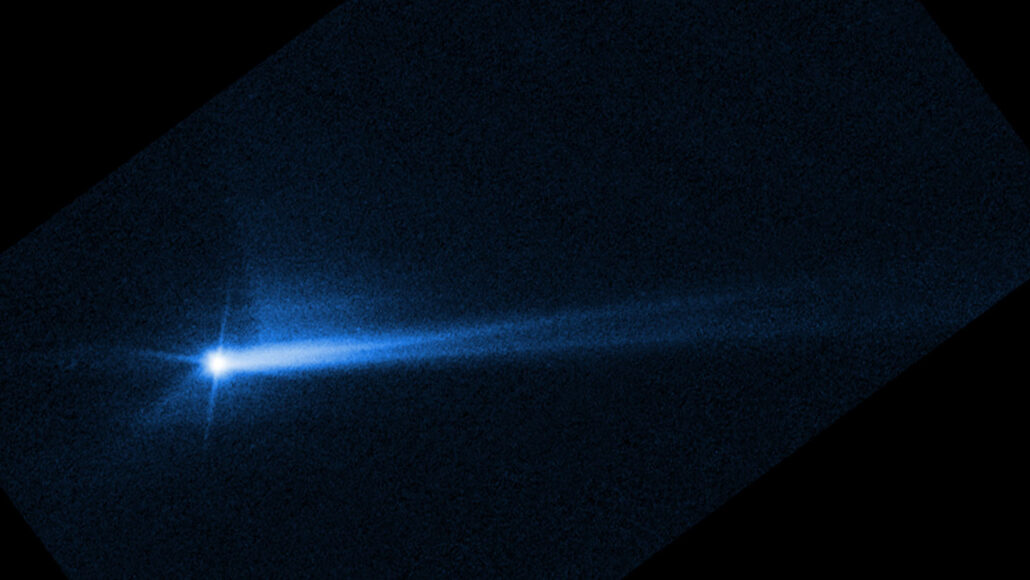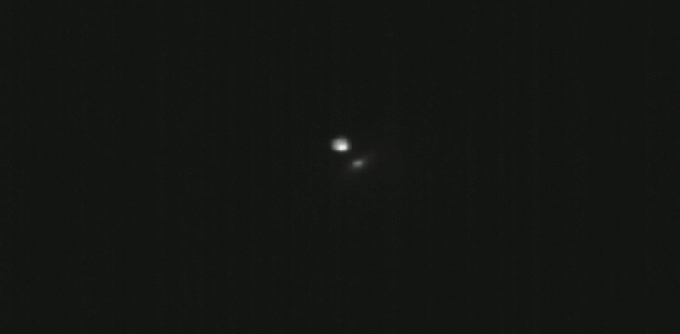NASA’s DART spacecraft successfully bumped an asteroid onto a new path
The change in the asteroid’s orbit was even bigger than expected

This image shows a split stream of dust and rock streaming off the asteroid Dimorphos nearly 12 days after the DART spacecraft smashed into it. It was taken by the Hubble Space Telescope.
NASA, ESA, STScI, Hubble
It worked! Humans have, for the first time, purposely moved a celestial object.
On September 26, NASA’s DART spacecraft rammed into an asteroid named Dimorphos. It struck the space rock at about 22,500 kilometers per hour (nearly 14,000 miles per hour). Its goal? To bump Dimorphos slightly closer to the larger asteroid it orbits, Didymos.
The experiment was a smashing success. Before the impact, Dimorphos orbited Didymos every 11 hours and 55 minutes. After, its orbit was 11 hours and 23 minutes. That 32-minute difference was far greater than astronomers expected.
NASA announced these results October 11 in a news briefing.
Neither Dimorphos nor Didymos poses any threat to Earth. DART’s mission was to help scientists find out if a similar impact could nudge an asteroid out of the way if one was ever seen to be on a collision course with Earth.
“For the first time ever, humanity has changed the orbit of a planetary body,” said Lori Glaze. She directs NASA’s planetary-science division, in Washington, D.C.
Four telescopes in Chile and South Africa watched Dimorphos and Didymos every night after DART’s impact. The telescopes can’t see the asteroids separately. But they can see the asteroids’ combined brightness. That brightness changes as Dimorphos transits (passes in front of) and or passes behind Didymos. The pace of those changes reveals how fast Dimorphos orbits Didymos.
All four telescopes saw brightness changes consistent with an 11-hour, 23-minute orbit. The result was confirmed by two planetary-radar facilities. Those instruments bounced radio waves off the asteroids to measure their orbits directly.

The DART team aimed to change Dimorphos’ orbit by at least 73 seconds. The mission overshot that goal by more than 30 minutes. The team thinks the huge plume of debris that the impact kicked up gave the mission extra oomph. DART’s impact itself gave the asteroid a push. But the debris flying off in the other direction pushed the space rock even more. The debris plume basically acted like a temporary rocket engine for the asteroid.
“This is a very exciting and promising result for planetary defense,” said Nancy Chabot. This planetary scientist works at Johns Hopkins Applied Physics Laboratory in Laurel, Md. That’s the lab in charge of the DART mission.
The length of Dimorphos’ orbit changed by 4 percent. “It just gave it a small nudge,” Chabot said. So, knowing an asteroid is coming far ahead of time is crucial for a defense system. For something similar to work on an asteroid headed for Earth, she said, “you’d want to do it years in advance.” An upcoming space telescope called Near-Earth Object Surveyor could help provide such an early warning.







